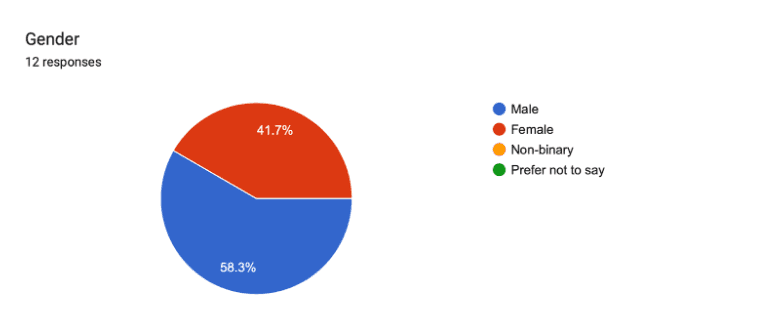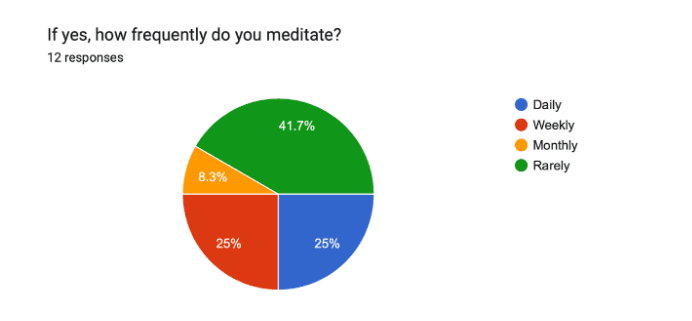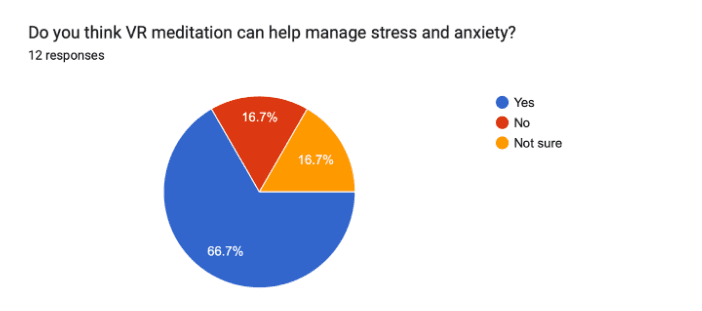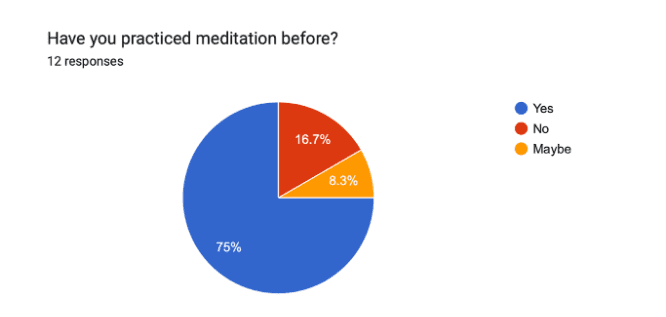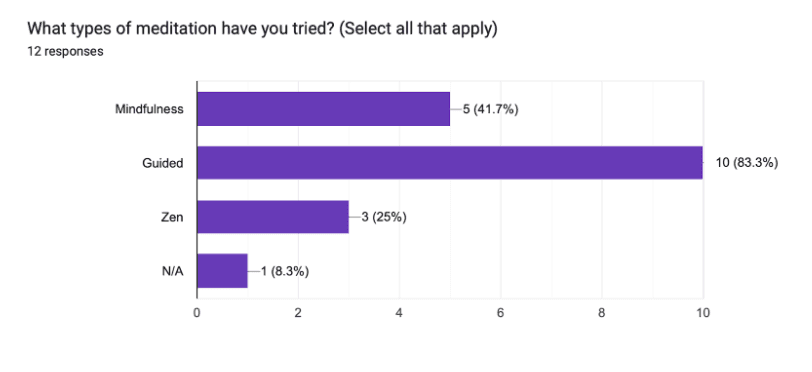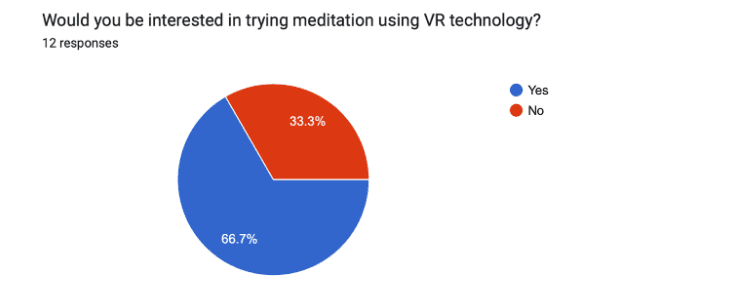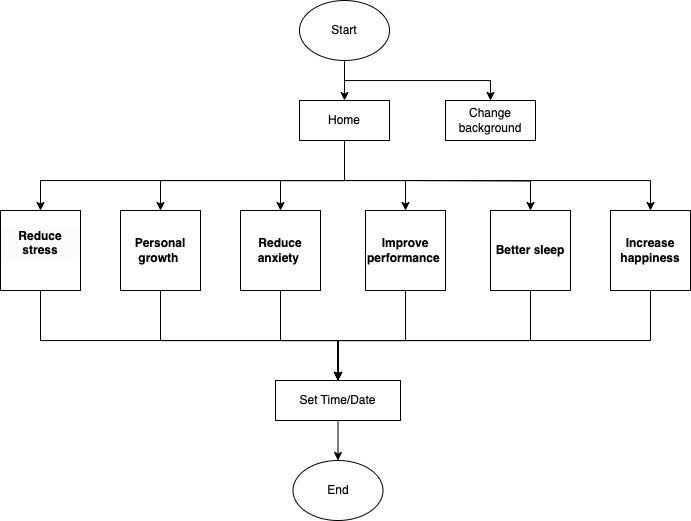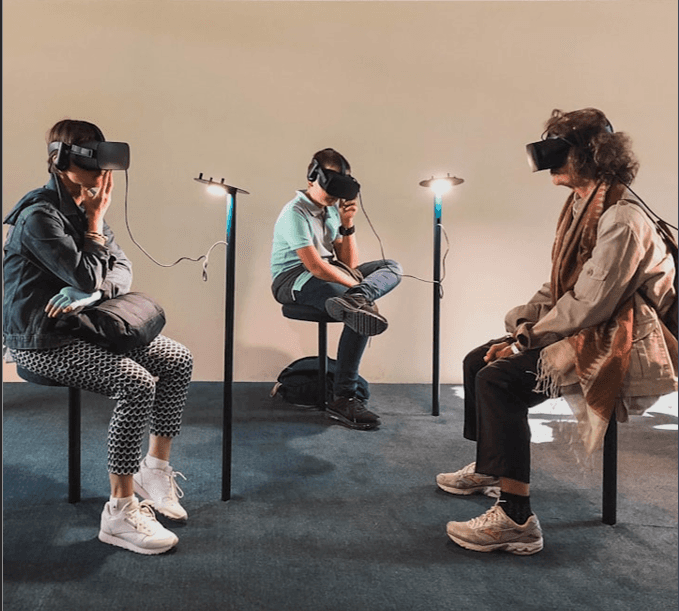Immersive meditation using Virtual Reality(VR)
"Step into Serenity: Experience the ultimate in tranquility and mindfulness with our Virtual Reality (VR) meditation sessions. Immerse yourself in peaceful, breathtaking environments that transport you away from the chaos of everyday life, allowing you to focus, relax, and rejuvenate your mind and spirit."
Problem Statement
Despite the growing interest in meditation as a tool for stress management and overall well-being, many individuals face barriers to establishing and maintaining a regular meditation practice. These barriers include difficulty focusing, lack of knowledge about meditation techniques, and reluctance to meditate due to various reasons. Additionally, while virtual reality (VR) technology has shown potential in various domains, its application in meditation remains relatively unexplored.
Therefore, the problem statement for this case study is to investigate the effectiveness of VR meditation as a tool for managing stress and anxiety, identify the barriers preventing individuals from engaging in regular meditation practice, and explore the features and functionalities desired in a VR meditation app. By addressing these challenges, we aim to develop insights and recommendations for the design and implementation of VR meditation solutions that cater to the needs and preferences of users, ultimately promoting mental well-being and mindfulness in today's fast-paced world.
Solution
The proposed solution entails the development of a Virtual Reality (VR) meditation and stress-management software application specifically designed for college students. This application aims to provide immersive meditation experiences to help users reduce anxiety and stress levels.
The core features of the application include:
Calming Environments: The application will offer a variety of serene and tranquil virtual environments, such as peaceful landscapes, beaches, forests, or mountain vistas, designed to induce relaxation and stress relief.
Customizable Scenery: Users will have the option to personalize their meditation settings, choosing elements like background scenery, ambient sounds, and lighting to tailor the experience to their preferences and optimize relaxation.
Interactive Elements: To enhance engagement and effectiveness, interactive elements will be incorporated into the virtual environments. These may include soothing activities like virtual painting, object manipulation, or guided relaxation exercises.
Guided Meditation Sessions: The application will feature guided meditation sessions led by experienced instructors, offering users structured practices to follow along with and fostering mindfulness and emotional well-being.
Feedback Mechanisms: Users will be encouraged to provide feedback on their meditation experiences, allowing for continuous improvement and customization based on user preferences and effectiveness.
Survey & Findings
As part of our research on AR shopping experiences, we conducted a user Survey to understand their opinions and preferences. Total of 12 participants participated.
Demographic Profile:
The survey collected responses from individuals with diverse backgrounds, including various fields of study and occupations. Participants' ages ranged from 22 to 28.
Meditation Practices:
Around 75% have practiced meditation before, with varying frequencies. The most common types of meditation tried include guided and mindfulness meditation.
Despite the interest in meditation, some participants indicated barriers to regular practice, such as difficulty focusing, lack of knowledge about meditation techniques, and reluctance to meditate.
Interest in VR Meditation:
None of the participants had tried meditation using virtual reality (VR) technology before, but 67% expressed interest in trying it. Many participants identified features they would like to see in a VR meditation app, such as customizable meditation environments, guided sessions tailored to different stressors, progress tracking, and schedule synchronization.
Perception of VR Meditation:
A majority of participants (67%) believe that VR meditation can help manage stress and anxiety. Some participants expressed uncertainty or were unsure about its efficacy, while others were enthusiastic about the potential benefits of VR meditation.
Overall Insights:
The findings suggest a strong interest among participants in integrating meditation into their daily routines, with VR technology perceived as a promising tool for stress management. Participants identified specific features and functionalities they desire in a VR meditation app, highlighting opportunities for developers to create tailored solutions that meet users' needs and preferences.
User Flow
User flows outline the step-by-step pathways that users will take within the VR meditation and stress-management application, guiding them through the process from initial access to engaging in meditation sessions and providing feedback.
Key components of user flows include:
Onboarding: Introducing users to the application and guiding them through the registration or setup process.
Navigation: Providing intuitive navigation pathways within the application interface, allowing users to easily explore different features and options.
Meditation Sessions: Facilitating smooth transitions into meditation sessions, offering options for selecting environments, choosing guided practices, and adjusting settings.
Feedback Mechanisms: Incorporating prompts or mechanisms for users to provide feedback on their meditation experiences, ensuring continuous improvement and user satisfaction.
Metrics and measurements
Quantitative Metrics:
Pre- and Post-Intervention Stress Levels:
Participants' stress levels were measured before and after using the VR meditation interventions using standardized stress assessment scales (e.g., Perceived Stress Scale).
Self-Reported Stress Reduction:
Participants were asked to rate their perceived stress levels on a numerical scale (e.g., from 1 to 10) before and after each VR meditation session.
Session Duration Distribution:
The distribution of session durations was analyzed to understand how long users typically engaged with the VR environment during each meditation session.
Feature Adoption Rate:
The usage of different features within the VR environment was tracked to identify which features were most popular among users and which ones may have needed improvement.
Qualitative Measurements:
User Feedback and Reviews:
Qualitative feedback from users was collected through feedback forms, or direct communication. Specific comments, suggestions, and complaints were noted to inform iterative improvements.
Usability Testing Observations:
Usability testing sessions were conducted with participants to observe their interactions with the VR environment. Usability issues, confusion points, or areas where users struggled to accomplish tasks were identified.
Task Success Rate:
The percentage of users who successfully completed specific tasks, such as starting a meditation session or adjusting settings, was measured. This helped identify usability bottlenecks.
Interviews:
Conduct one-on-one interviews with students who currently use mobile apps to manage stress and understand their requirements
Prototype
Introduction: "Our immersive meditation VR experience aims to provide users with a peaceful and rejuvenating escape from their daily lives."
Purpose: "The purpose of this prototype is to demonstrate how virtual reality can be used to create a calming environment that promotes mindfulness and relaxation."
Features: "Key features include soothing audio, serene visuals, and interactive elements to enhance the meditation experience."
User Interaction: "Users can navigate through different meditation environments, select meditation programs, and customize their experience based on their preferences."
Feedback: "Feedback from users will be crucial in refining the prototype to ensure it meets the needs and expectations of our target audience."
Testing: "User testing will help us gather insights on usability, immersion, and overall effectiveness of the VR meditation experience."
Iteration: "Based on user feedback and testing results, we will iterate on the prototype to improve functionality, content, and user experience."
Conclusion: "In conclusion, this prototype represents our vision for a transformative meditation experience in virtual reality, and we are excited to continue developing it further."
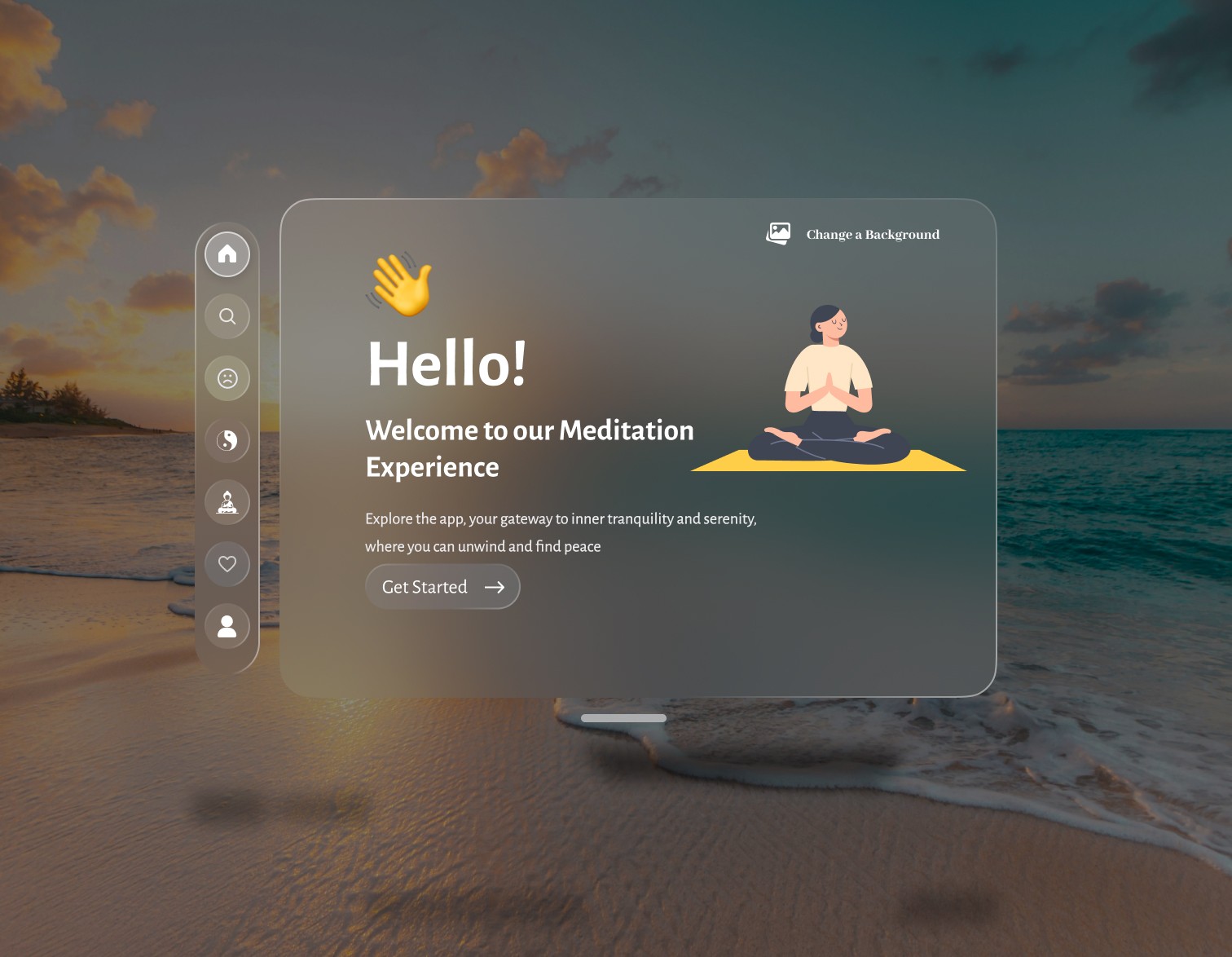
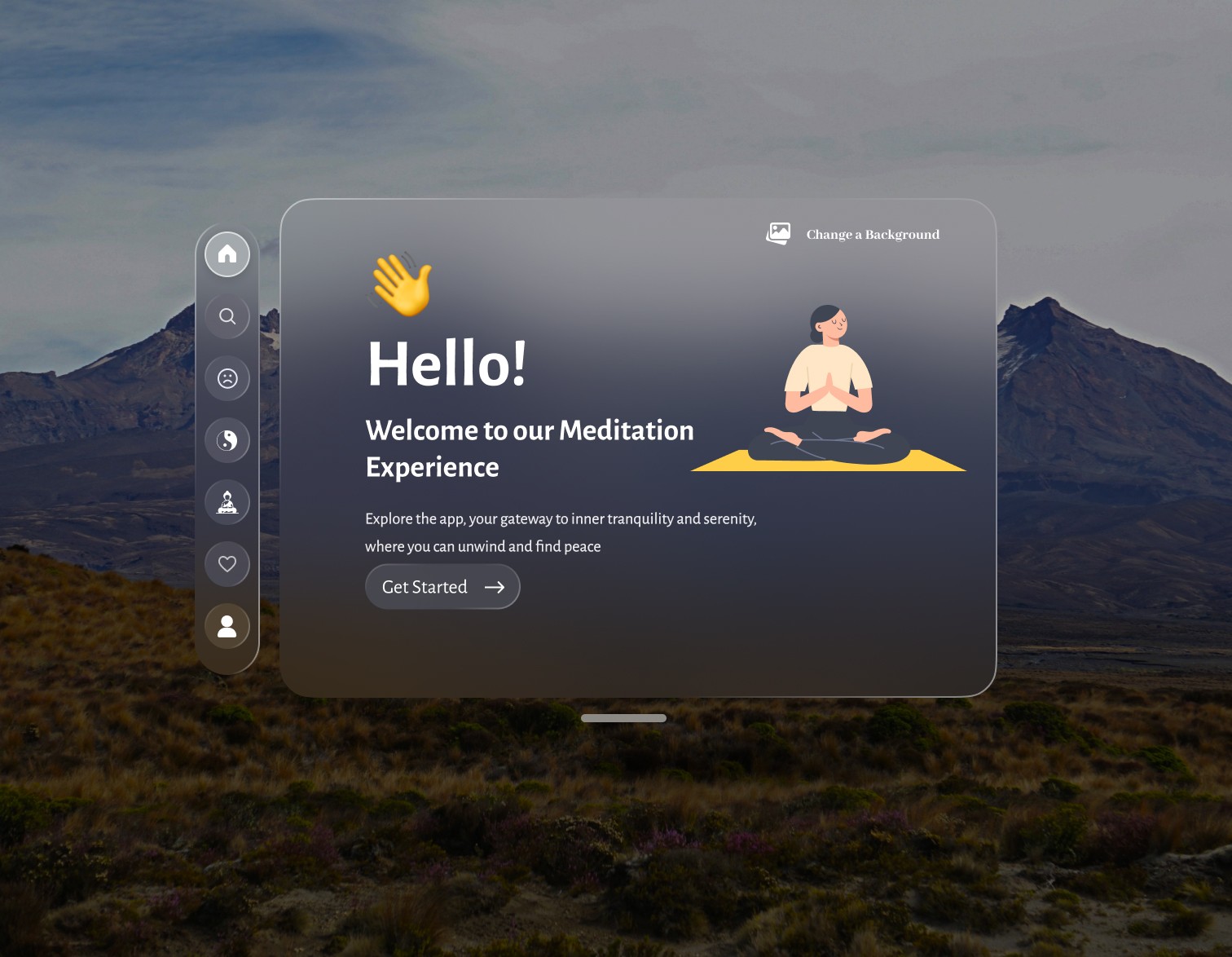
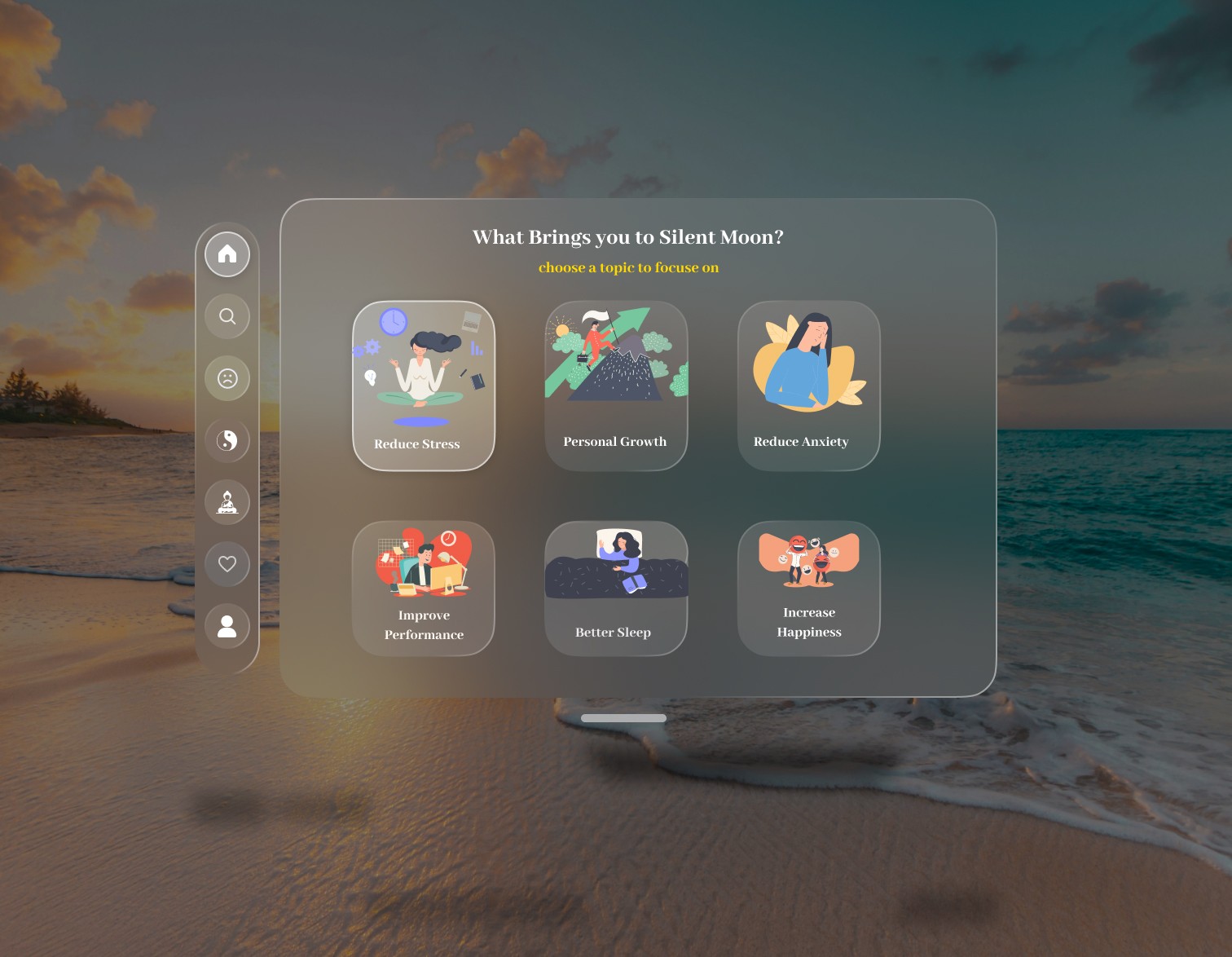
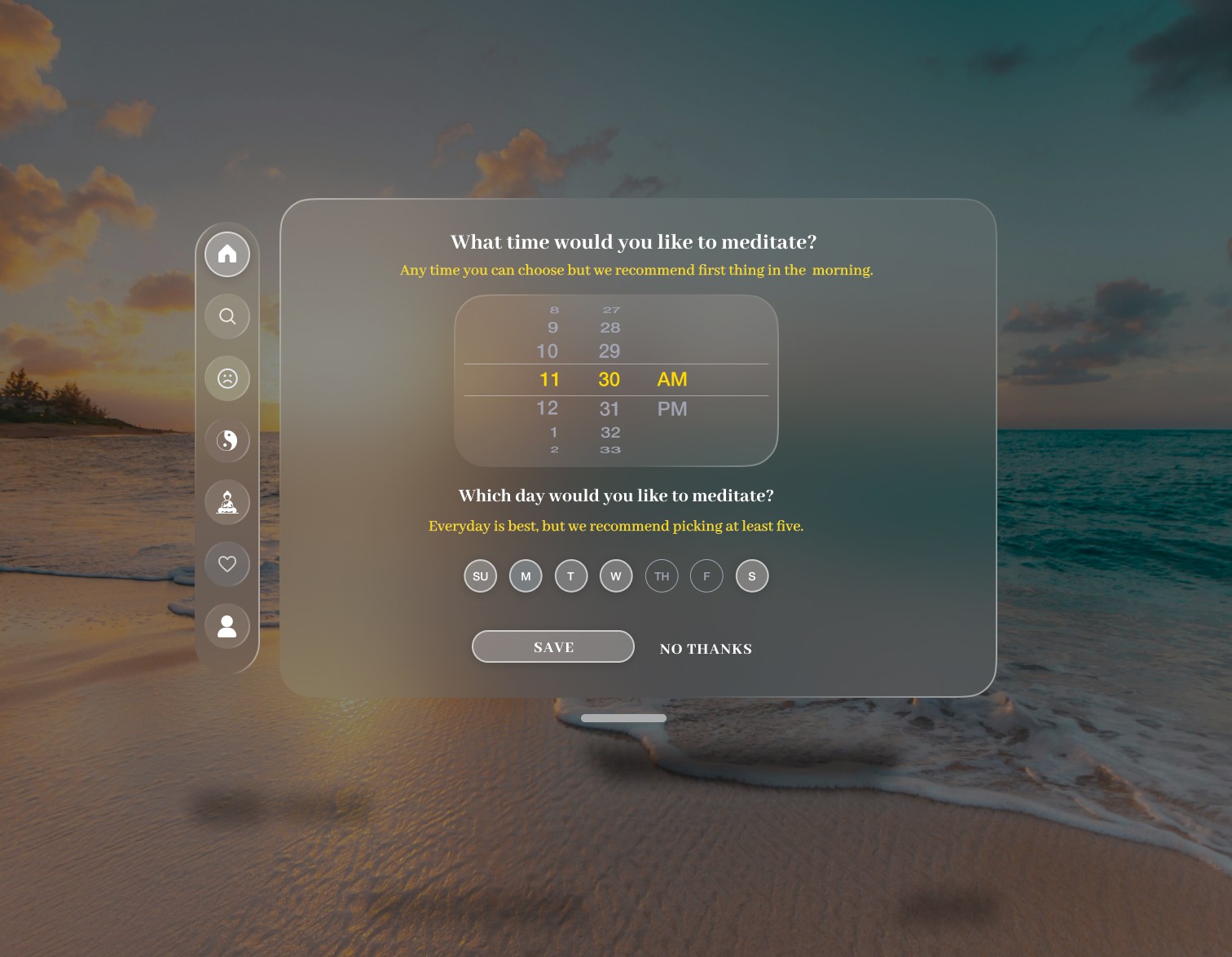
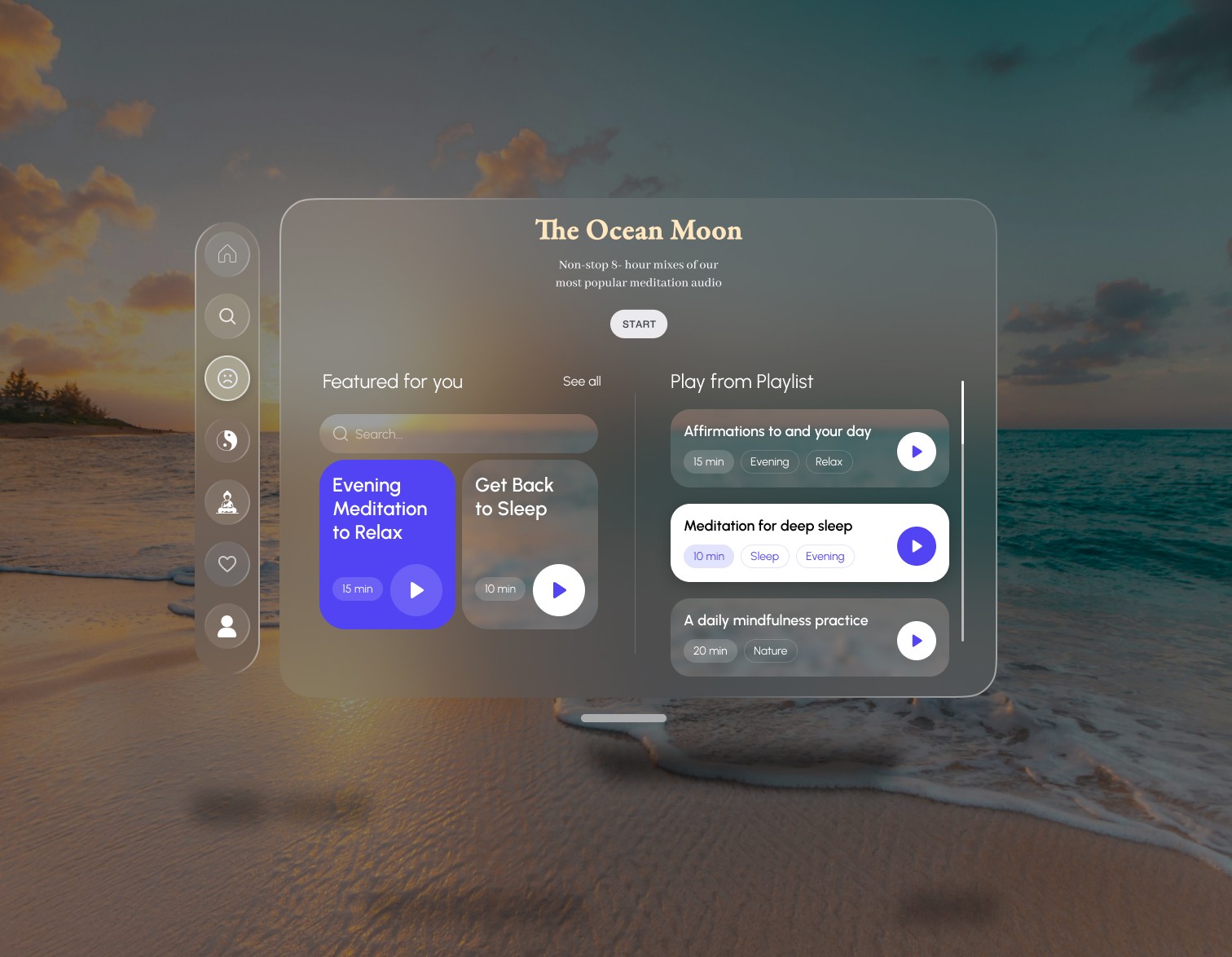
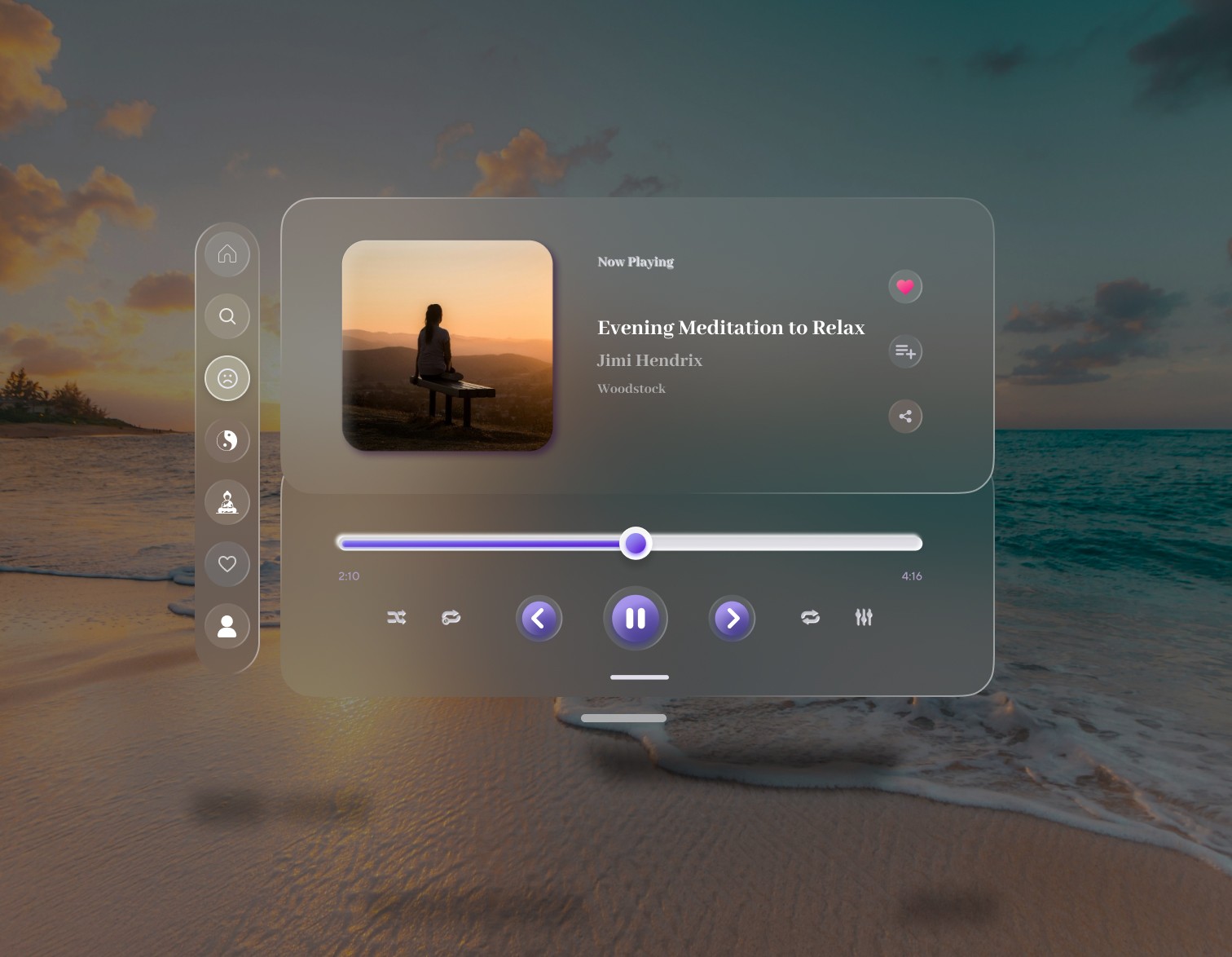
Limitations
Single Usability Testing Session:
Due to logistical constraints, usability testing could only be conducted for one session each. This limitation may have impacted the depth of insights gathered, as users may not have had sufficient time to fully explore and interact with the VR meditation app. Additionally, users' experiences in a single session may not be fully representative of their long-term engagement and satisfaction with the app.
Challenges of Testing Prototypes in VR:
Technical Complexity: Testing prototypes in virtual reality (VR) environments poses unique challenges compared to traditional software testing. VR technologies require specialized equipment and technical expertise, making it difficult to conduct iterative testing and gather feedback from users. The complexity of VR setups may have limited the scope and frequency of usability testing sessions, hindering the ability to iterate on the prototype based on user feedback.
Inability to Measure Long-Term Impact:
Lack of Stress Measurements: The study was unable to measure stress levels over the long term to assess the sustained impact of VR meditation practices. While pre- and post-intervention stress measurements were collected, these only provide a snapshot of stress levels immediately before and after using the VR meditation app. Without long-term follow-up assessments, it's challenging to evaluate the lasting effects of VR meditation on participants' stress management and overall well-being.
Future Scope
•Research with participants using VR headset to study impact of daily VR meditation over longer time periods
•Research to compare VR meditation with conventional meditation methods
•Usability testing using more sophisticated VR headsets
•More customization - allowing users to design their own meditations

